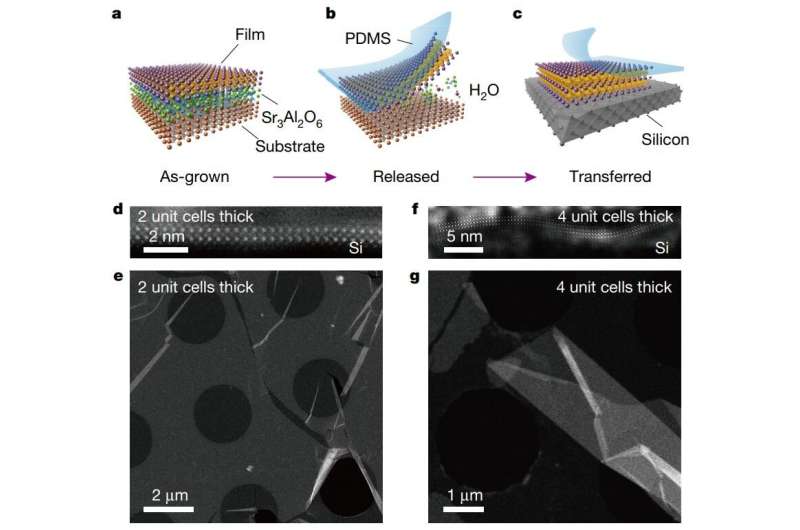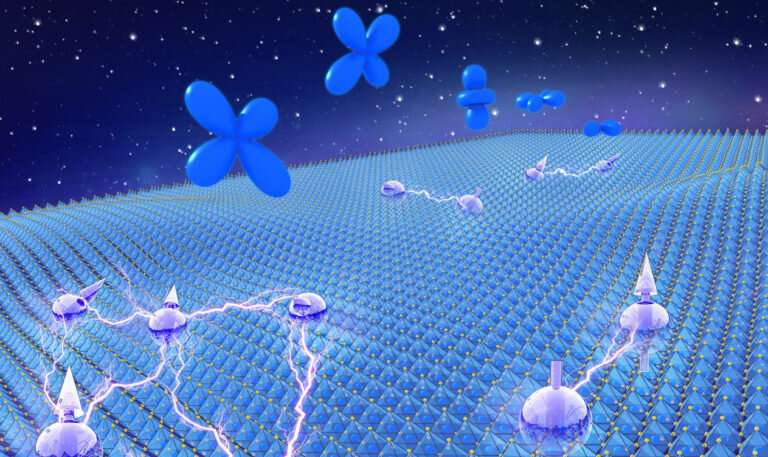June 6, 2019 report
Researchers find a way to produce free-standing films of perovskite oxides

A team of researchers from Nanjing University in China, the University of Nebraska and the University of California in the U.S. has found a way to produce free-standing films of perovskite oxide. In their paper published in the journal Nature, the group describes the process they developed and how well it worked when tested. Yorick Birkhölzer and Gertjan Koster from the University of Twente have published a News and Views piece on the work done by the team in the same journal issue.
Birkhölzer and Koster point out that many new materials are made by going to extremes—making them really big or really small. Making them small has led to many recent discoveries, they note, including a technique to make graphene. One area of research has focused on ways to produce transition-metal oxides in a thinner format. It has been slow going, however, due to their crystalline nature. Unlike some materials, transition-metal oxides do not naturally form into layers with a top layer that can be peeled off. Instead, they form in strongly bonded 3-D structures. Because of this, some in the field have worried that it might never be possible to produce them in desired forms. But now, the researchers with this new effort have found a way to produce two transition-metal oxides (perovskite oxides strontium titanate and bismuth ferrite) in a thin-film format.
The process developed by the researchers involved using molecular beam epitaxy to apply a buffer layer onto a substrate followed by a layer of perovskite. Once the sandwich of materials was made, the researchers used water to dissolve the buffer layer, allowing the perovskite to be removed and placed onto other substrates. The researchers report that their process worked so well they were able to extract films of perovskite near the theoretical limit—one square unit cell (with approximately 0.4-nanometer sides).

Birkhölzer and Koster point out that the work done by the combined Chinese and American team demonstrated that it is possible to produce at least some transition-metal oxides in a thin film format. Their research also allayed fears that such a film would collapse, making it unusable.
More information: Dianxiang Ji et al. Freestanding crystalline oxide perovskites down to the monolayer limit, Nature (2019). DOI: 10.1038/s41586-019-1255-7
Journal information: Nature
© 2019 Science X Network



















